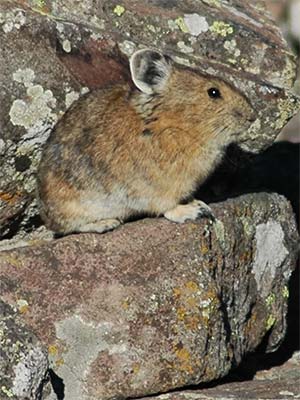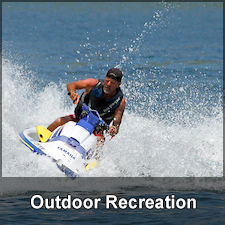Page Content

Overview
 White-tailed ptarmigans,
American pikas, and brown-capped rosy finches inhabit the alpine ecosystem, meaning that they dwell in landscapes where trees become stunted or can no longer grow, at about 11,500 feet in Colorado.
White-tailed ptarmigans,
American pikas, and brown-capped rosy finches inhabit the alpine ecosystem, meaning that they dwell in landscapes where trees become stunted or can no longer grow, at about 11,500 feet in Colorado.
Alpine Species Highlight
White-tailed ptarmigans - employ a monogamous mating system and defend territories using a very loud mating call, which helps us to locate them. They eat willow in the winter and depend on extensive willow carrs to access food.
American pikas - are small mammals related to rabbits and hares that live in the crevices of boulder and talus fields. They eat forbs and grasses that surround these rocky fields. They are active all year and survive the winter by collecting vegetation and storing it in “hay piles.”
Brown-capped rosy finches - build their nests in cliffs and forage on the alpine tundra for insects and seeds during the summer. This species’ range occurs almost entirely in Colorado. They live the entire year at high elevations only descending from their mountain habitat in the winter months when storms push them to lower elevations to access seeds.
Why Are Alpine Species Important?
 All three alpine species are listed in our
SWAP as Species of Greatest Conservation Need. Because Colorado contains one-fourth of all alpine habitats in the lower 48 states, it remains a stronghold for alpine species. Therefore, it is important for the agency to monitor the impact that climate change may have on wildlife.
All three alpine species are listed in our
SWAP as Species of Greatest Conservation Need. Because Colorado contains one-fourth of all alpine habitats in the lower 48 states, it remains a stronghold for alpine species. Therefore, it is important for the agency to monitor the impact that climate change may have on wildlife.
Current knowledge about climate change predicts that habitats and species composition will be altered due to changes in temperature and precipitation patterns. Pika, white-tailed ptarmigan and brown-capped rosy finches, due to their sensitivity to climate and habitat changes, are credible species to use as indicators of alpine ecosystem health over time.
The development of baseline data and a long-term monitoring program for these sentinel species will aid CPW in conserving and maintaining healthy ecosystems for Colorado’s wildlife.
What Are The Associated Challenges?


What is CPW Doing?
We have implemented long-term monitoring efforts to continually assess species status and conducted studies to better understand impacts to populations and we work with partners to implement conservation efforts for protection.

